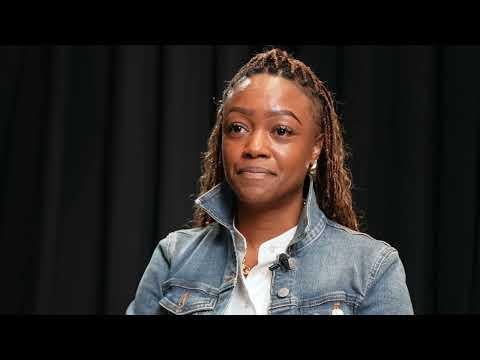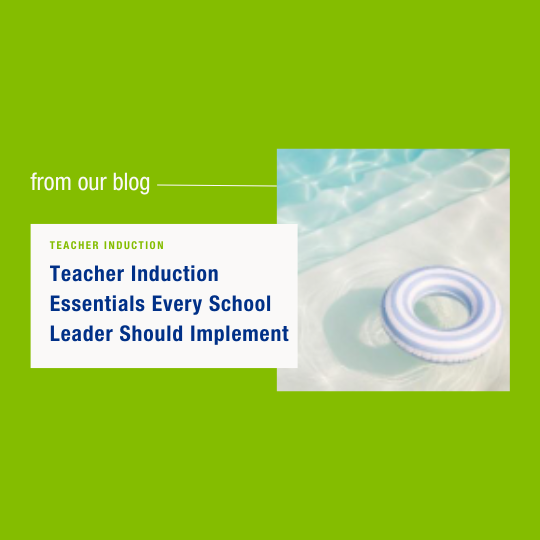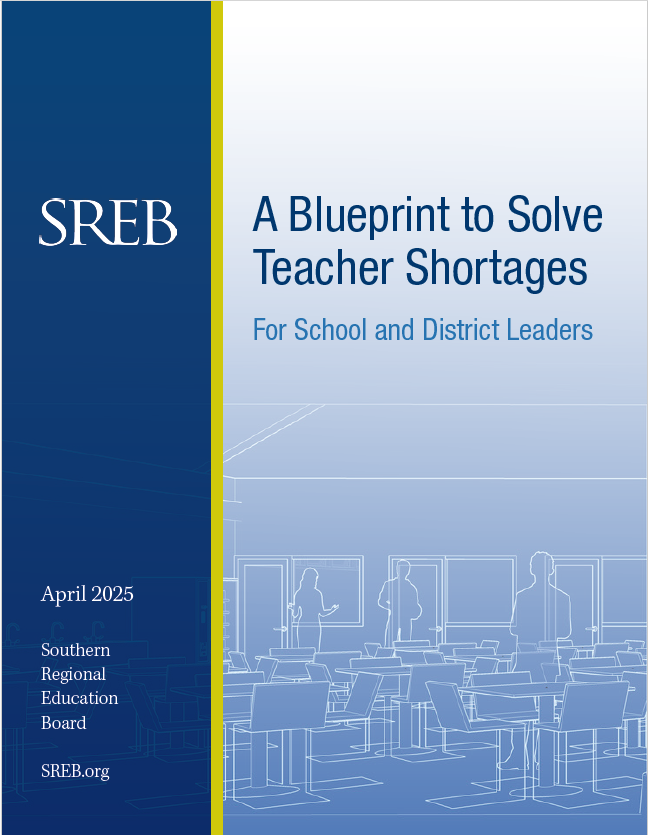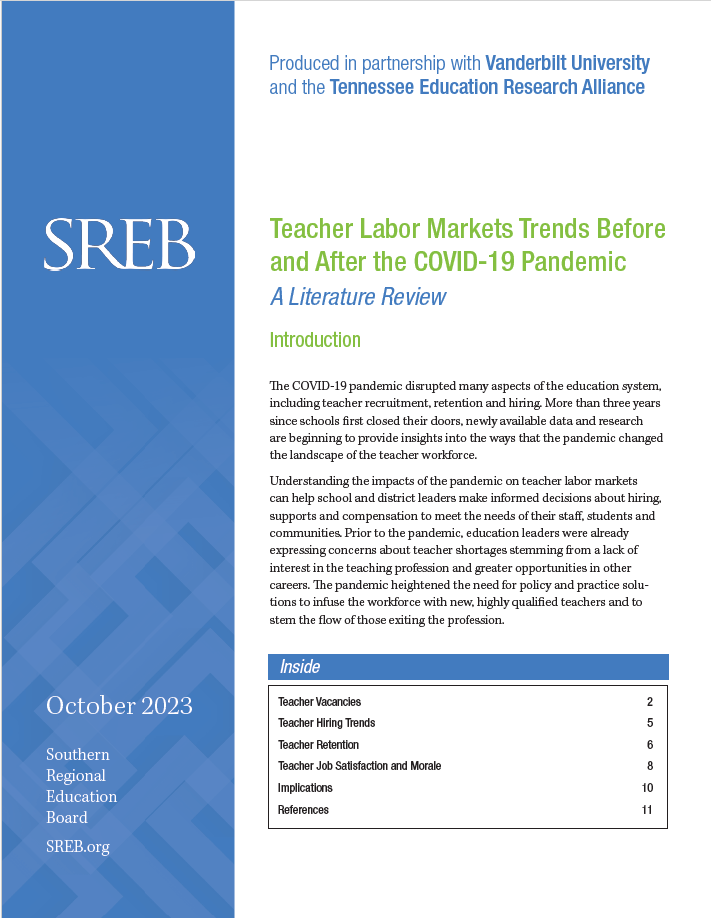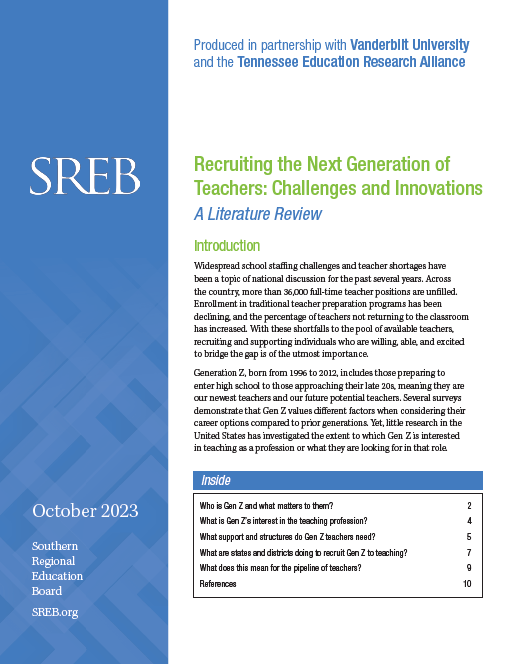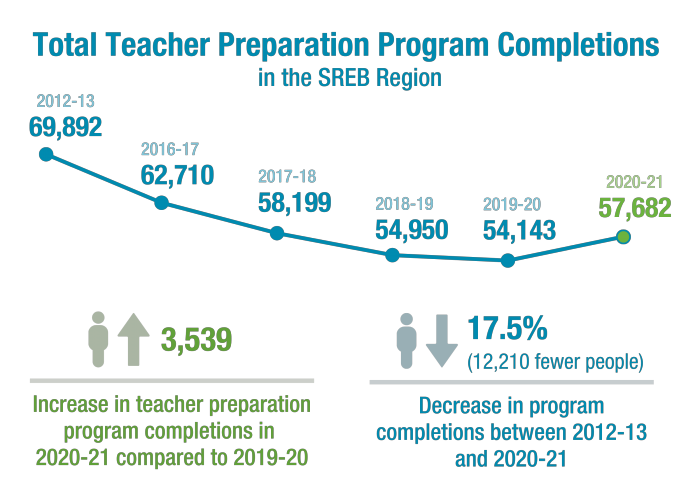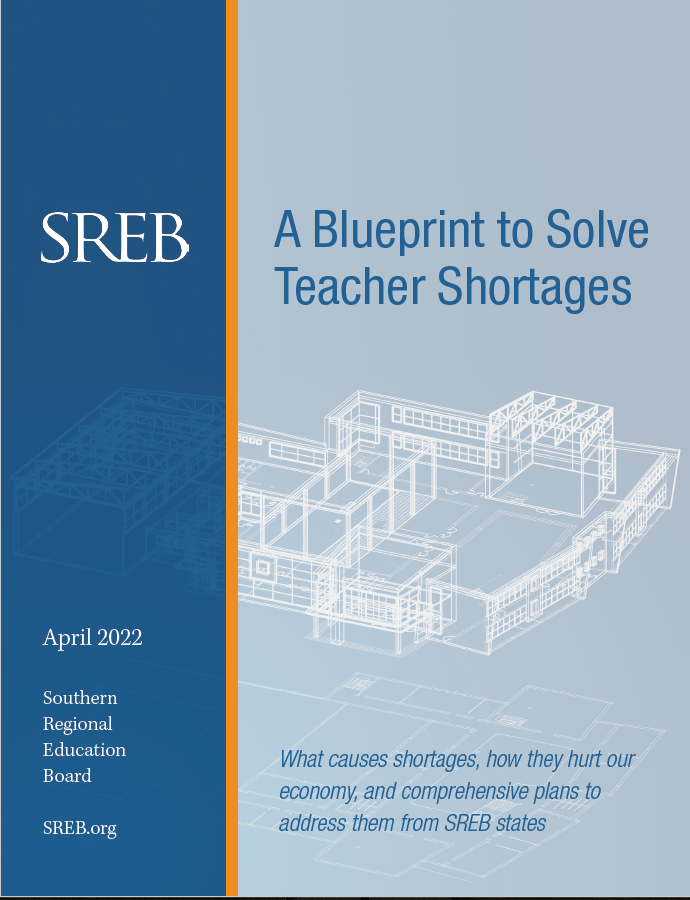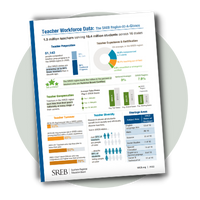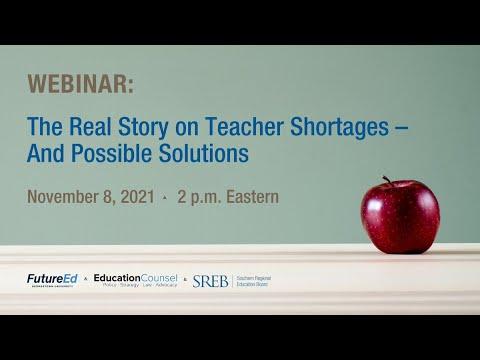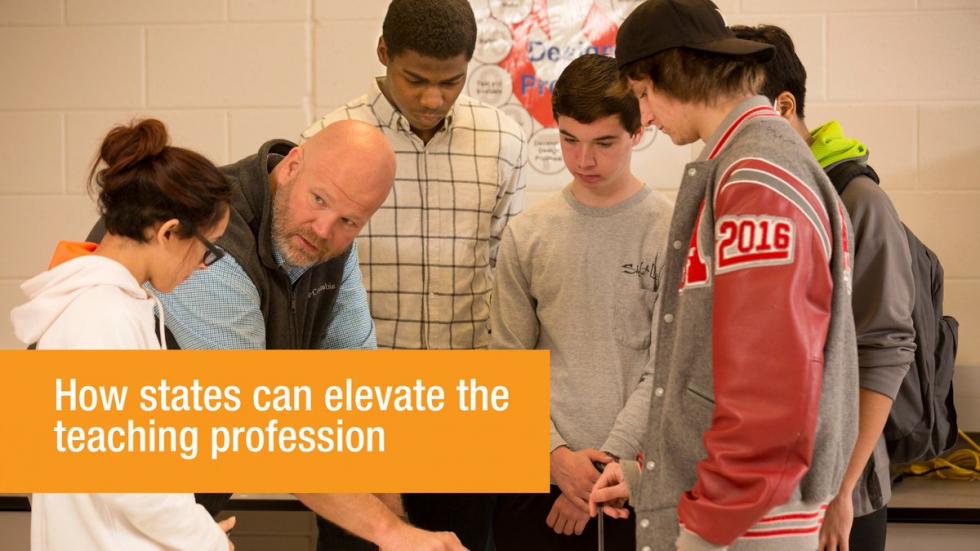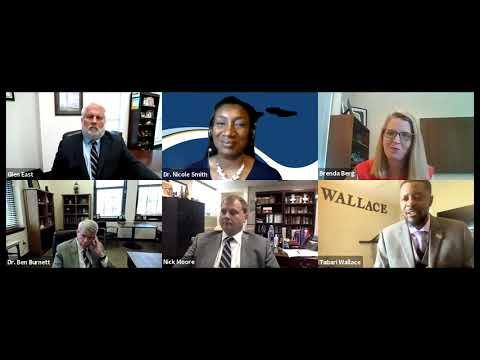Topic: Teacher Shortages
Teacher Workforce Shortages
Every student deserves a great teacher — but teacher shortages hurt education and the economy. Teachers are one of the most influential factors in a child’s learning. And collectively, the teacher workforce helps to prepare workers for all other industries.
But across the Southeast, teacher shortages harm student learning, deepen inequities, compound the challenges teachers face, and cause economic disadvantages.

HOW CAN STATES REVERSE THESE TRENDS?
To elevate the profession and address teacher shortages, states should:
1. Understand the data. Data is a valuable tool to help inform both policy and practice. Regional and state data can paint a picture of teacher workforce strengths, challenges, and trends.
2. Design a comprehensive blueprint. When renovating teacher workforce policies, consider the big picture rather than individual pieces in isolation. Design policies for preparation & pathways, licensure, professional support, and compensation together as an interlocking system.
3. Ensure policies support each stage of a teacher’s career. Aligning policies from preparation through classroom teaching and leadership opportunities can help make teaching a more attractive and sustainable profession.
Educator Insights on How to Save the Teaching Profession
Educators are at the heart of serving students—and they have ideas that can transform their own profession. At the SREB Summer Conference, we asked teachers, coaches, counselors and administrators from around the South a simple but powerful question: What would it take to make teaching more attractive and sustainable? Through on-camera interviews, focus groups, and surveys, educators shared their honest perspectives on the challenges they face today and their solution ideas for the future.
Investing Early in Teachers Pays Dividends for Everyone
In this post, we look at why investing early in teachers leads to great results for everyone involved. Through data and research, see how investing in teachers leads to things like higher retention.
What SREB’s Teacher Workforce Data Really Tells Us — And Why It Should Matter
In this post, we look at what the insights in SREB’s P-12 Educator Workforce Data portal actually mean. From examining the early childhood system strain to teacher shortages and more, reading this post will give you a better understanding into the current educator workforce.
Mentoring New Teachers
Invest in Educators Series
This guide provides support for mentors and outlines best practices for teacher induction using the SREB Teacher Induction Framework.
Making Education a Competitive Career
In this clip from SREB’s Teacher Workforce series, education professionals highlight the financial challenges schools face in attracting and retaining talented educators, especially those coming from higher-paying industries. Fair, livable compensation is critical to making education a viable, long-term career.
View the full video.
Professional Pay for the Teaching Profession
In this clip from SREB’s Teacher Workforce series, education professionals discuss how increasing teacher pay has helped bring more applicants into the profession.
View the full video.
Teachers Can Inspire Students to Become Teachers
In this clip from SREB’s Teacher Workforce series, education professionals reflect on the importance of showing students that teaching can be a meaningful and rewarding career. They emphasize inspiring future educators early and highlighting the impact teaching can have on students’ lives.
View the full video.
Strengthening the Teaching Pipeline With Paid Residencies
In this clip from SREB’s Teacher Workforce series, education professionals discuss the value of longer teacher residencies. Spending a full year in the classroom, with support to make it financially feasible, helps new teachers gain experience and stay in the profession.
View the full video.
Thoughts on Teacher Training and Development
In this clip from SREB’s Teacher Workforce series, education professionals highlight the importance of instructional coaching and mentoring. Supporting new and experienced teachers through paid professional development can strengthen the workforce and help more educators succeed.
View the full video.
Investing in Education Resources
In this clip from SREB’s Teacher Workforce series, educators call attention to the funding challenges schools face. From classroom resources to support services and fair pay, they emphasize that expectations for teachers and students must be matched with the funding needed to meet them.
View the full video.
Challenges of the Profession: Job Satisfaction
In this clip from SREB’s Teacher Workforce series, an educator reflects on the importance of teachers valuing themselves, noting that fostering respect and satisfaction in the profession is essential to inspiring the next generation of educators.
View the full video.
The Principal Effect
In this clip from SREB’s Teacher Workforce series, educators emphasize the impact of strong leadership on schools. Effective principals can transform the teaching experience, while investing in leadership development helps build a workforce where teachers can thrive.
View the full video.
From Student to Teacher
How GYO Programs Foster Local Talent in Education
This brief was written by Joseph Tadlock, SREB director of research and evaluation, and Megan Boren, SREB director of educator workforce.
In this brief, we explore the different types of grow your own teacher programs, provide evidence of their effectiveness, and discuss how these programs could reshape new teacher induction.
Teacher Induction Essentials
For Every School Leader
Keeping the teachers you have is more cost-effective than hiring new teachers each year. That is just one reason that teacher induction is so important. In this post, we talk about teacher induction essentials that every school leader should be using.
Educator Workforce Data
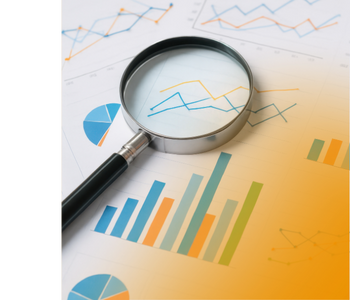 To address teacher shortages, elevate the profession, and fuel the economy, a key first step is unpacking the data.
To address teacher shortages, elevate the profession, and fuel the economy, a key first step is unpacking the data.
SREB supports efforts to collect and use data to inform policy and practice as part of building, supporting, and maintaining a strong educator workforce.
EXPLORE OUR DATA COLLECTIONS ON EDUCATOR PIPELINES AND COMPENSATION:
Pathways and Retention for New Teachers
Insights from Southern States
 Early-career teachers are entering the profession via an expanding variety of pathways. Do certain pathways provide more support than others? Do some entry routes into teaching yield higher rates of teacher retention? Why has early career teacher retention dipped so low and what can we do to change that?
Early-career teachers are entering the profession via an expanding variety of pathways. Do certain pathways provide more support than others? Do some entry routes into teaching yield higher rates of teacher retention? Why has early career teacher retention dipped so low and what can we do to change that?
A research partnership between SREB and Vanderbilt University explores these questions and more by analyzing state administrative data, survey results, and teacher interviews across three states in the South.
A Blueprint to Solve Teacher Shortages
For School and District Leaders
The solution to teacher recruitment, quality and retention requires a comprehensive, long-term approach and reliable data. This report offers a framework for district planning and action, covering policy and practice for pathways and preparation, licensure and advancement, professional support and mentorship, and compensation and working conditions.
How Modernizing Teaching Will Recruit More Educators
It’s no secret that fewer individuals are pursuing teaching as a career. SREB reports on this data annually. It’s on our minds so much so that SREB recently pursued research around this topic with Vanderbilt University to study teacher labor markets, Gen Z’s interest in the profession and their feedback on teacher working conditions.
Teacher Shortage Data by State
State-Specific Data, Regional Trends, and Spotlights From Across the South
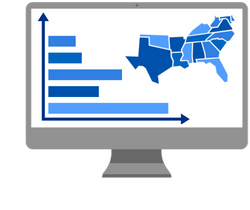 Explore regional highlights, state-by-state data collections, and spotlights of promising state practices from across the South. Data include various measures of teacher quantity, preparation, demographics, shortages, quality, and talent distribution from 2019-2023.
Explore regional highlights, state-by-state data collections, and spotlights of promising state practices from across the South. Data include various measures of teacher quantity, preparation, demographics, shortages, quality, and talent distribution from 2019-2023.
Teacher Labor Market Trends
Insights From Two Southern States
Teacher shortages, high turnover rates and declining interest in the teaching profession have proven difficult for policymakers to address. These concerns are even more dire in Southern states.
Partnering with researchers at Vanderbilt University’s Peabody College of Education, SREB studied data in Kentucky and Tennessee on teacher labor market trends over the last decade. This online report features seven findings with interactive charts.
The Next Generation of Teachers
A Study of Generation Z’s Interest in the Teaching Profession
We depend on Generation Z to fill the growing number of teaching vacancies. Partnering with researchers at Vanderbilt University’s Peabody College of Education, SREB studied data in Kentucky and Tennessee for insight into Gen Z and their interest in the teaching profession. This online report features six findings with interactive charts.
Teacher Labor Markets Trends Before and After the COVID-19 Pandemic
A Literature Review
The COVID-19 pandemic disrupted many aspects of the education system, including teacher recruitment, retention and hiring. More than three years since schools first closed their doors, newly available data and research are beginning to provide insights into the ways that the pandemic changed the landscape of the teacher workforce.
Recruiting the Next Generation of Teachers: Challenges and Innovations
Crafting programs and policies that address the teacher workforce requires knowledge of Gen Z, their interest in entering the teaching profession, and how to support them as new teachers. In this brief, the research team reviewed the literature on Gen Z’s background, interest in teaching as a profession, and what states and districts are doing to try and recruit them.
Let’s give our teachers what any employee needs to be successful
Building a First-Rate Teacher Workforce
Four Fundamentals of Attracting and Retaining Great Teachers — Starting with Data
 Districts and schools are having to rely on a “warm body” approach to address teacher shortages, focusing on filling numerical vacancies over teacher qualification or preparedness. But taking a closer look at four data categories can make efforts to solve shortages more effective and longer-lasting.
Districts and schools are having to rely on a “warm body” approach to address teacher shortages, focusing on filling numerical vacancies over teacher qualification or preparedness. But taking a closer look at four data categories can make efforts to solve shortages more effective and longer-lasting.
A Blueprint to Solve Teacher Shortages
The Overlooked Workforce
View the webinar recording >
How can we recruit and retain enough great teachers to serve all of our students? This webinar covered how several Southern states are working to enact their own comprehensive blueprints to elevate the teaching profession and reinforce the pipeline of qualified teachers.
A Blueprint to Solve Teacher Shortages
For State Leaders
Imagine a world where more great people enter teaching, stay in the profession, and get better and better. How do we achieve this?
This report offers insight for state leaders on how to elevate the profession by renovating policies that affect the teacher workforce. With lessons from SREB states that have forged comprehensive plans, it covers pathways and preparation, licensing, mentoring and support, and compensation structures. The report also includes data on shortages, what causes them and how they hurt our economy.
Teacher Workforce Data Summary
SREB Region At-A-Glance, 2019-20
The Overlooked Workforce
An Examination of Educator Shortages in the South
View the webinar recording >
Shortages in the teacher and faculty workforces are putting our economy and society at risk. This webinar examined the most recent data collected by SREB on P-20 educator shortages across the South. Speakers discussed why shortages have worsened, how several states are using data to address them, and presented:
WHAT WE KNOW ABOUT TEACHER SHORTAGES — AND HOW STATES, DISTRICTS CAN RESPOND
What do we know about teacher shortages in each state and across the country? How severe are they? What has caused the shortages — and how can leaders help solve them?
SREB joined leaders from EducationCounsel, FutureEd at Georgetown University, and state and local school systems for an online event Nov. 8 to answer these important questions. (See the video of the event at the end of this story.)
Impact of teacher shortages in most states far-reaching
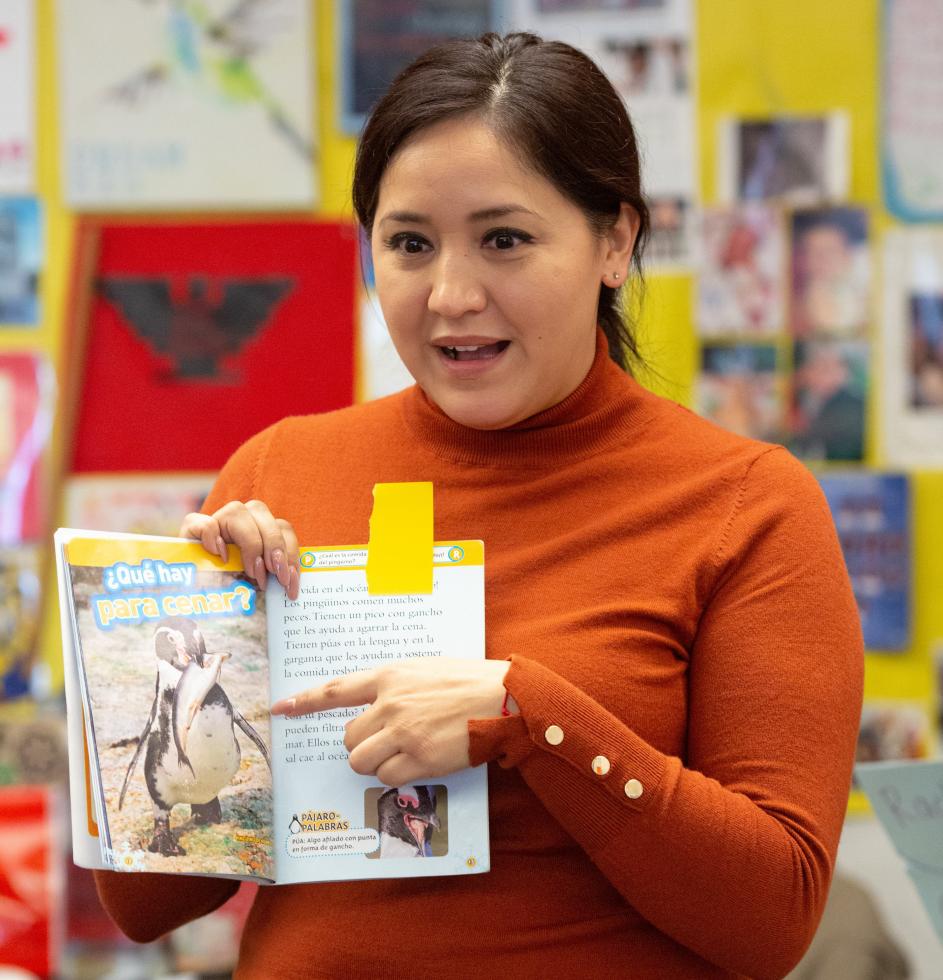 When students don’t have good
teachers, it can affect their cognitive growth — and over time
can result in measurable economic loss.
When students don’t have good
teachers, it can affect their cognitive growth — and over time
can result in measurable economic loss.
Teacher shortages, therefore, are the type of crisis that “can put an entire society at risk,” said Nicole Smith, the chief economist and research professor at the Georgetown University Center on Education and the Workforce.
Addressing Teacher Shortages
To Sustain Education, the Workforce and Economy
View the webinar recording
This panel explored how P-12 teachers are essential to not only student learning but also postsecondary education and the workforce – and how teacher shortages can threaten state economies in the long run.
COVID-19 Effects on the Teacher Workforce
In April, my mom called me with the news that my high school chemistry teacher, Mr. Metcalfe, who was rounding out his 42nd year of teaching, had died from COVID-19. I knew him from class, of course, but I also went to school with his son for 13 years and his family attended my grandparent’s church.
He was respected, loved and honored for his excellent teaching. His funeral was an all-day parade of cars through the high school parking lot, where community members waved and shouted condolences to his family. My mom said the cars stretched down the street for miles.
A Long-Term Solution to Teacher Shortages
Finding the Root of the Problem
We’ve all heard the saying “You can’t see the forest for the trees.” When it comes to state policies affecting the teacher workforce, it’s important to see both.
Teachers make life-long impressions on thousands of students — over 3,000 in an average career — and help raise every generation to understand the world and become productive, well-rounded citizens.


